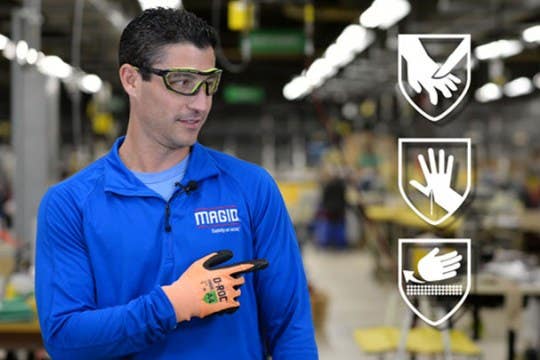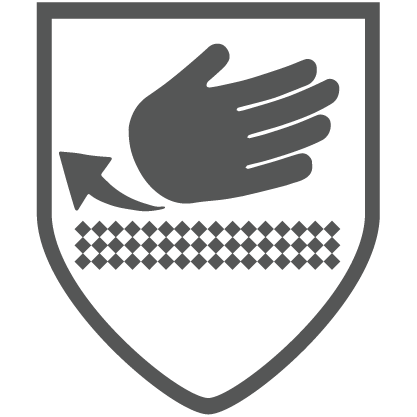
Cut, Puncture, & Abrasion Testing Explained
For a worker having an accident, the difference between a cut, a puncture, and an abrasion are painfully obvious. For safety managers, the best way to protect against these injuries can be much less clear.
Standards development organizations like ANSI and ISEA provide PPE testing to rate how well various gloves protect against cuts, punctures, and abrasions. But it can be complicated deciding which type of protection is appropriate and what level of each one you need. It helps to know the different ways agencies test to simulate each type of hazard.

Testing Cut Resistance
To measure Cut Resistance, a carefully calibrated machine drags a sharp blade across the material with a specific amount of pressure.
The amount of pressure needed to break through the fabric determines cut level.


Testing Puncture Resistance
For Puncture Resistance, a different machine pokes a metal stylus about the width of a pencil tip into the fabric. There’s a separate test to determine needle-stick resistance that uses a much thinner stylus.
The amount of force needed to puncture through the material determines puncture level.


Testing Abrasion Resistance
A third type of machine measures Abrasion Resistance by rotating fabric under two abrasive, weighted wheels that scrape against the material.
The number of revolutions needed to break through determines abrasion level.

Choosing the Right Safety Equipment for Your Application and Environment
Careful study of your application and all the hazards it involves can help you decide which type of protection will help your workers avoid injury. Keep in mind that these are controlled tests in a lab environment. These PPE tests are designed to simulate hazards, but don’t necessarily recreate the force or conditions that may be a part of your application.
Be sure to consider that your hazard may also require a combination of various types of protection. Avoid the temptation to choose gloves based only on the most obvious hazard. For example, you might need high cut-resistance for bending steel, but you may also need abrasion and even puncture resistance if the parts your people work with tend to have rough surfaces or metal burrs.
If you’re not sure what protection is best, consult a safety expert who can advise you on best practices for your application and environment. Because when you’re talking about the safety of your workers, the only cut, punctured, or abraded materials you want to see are in the PPE testing lab!



